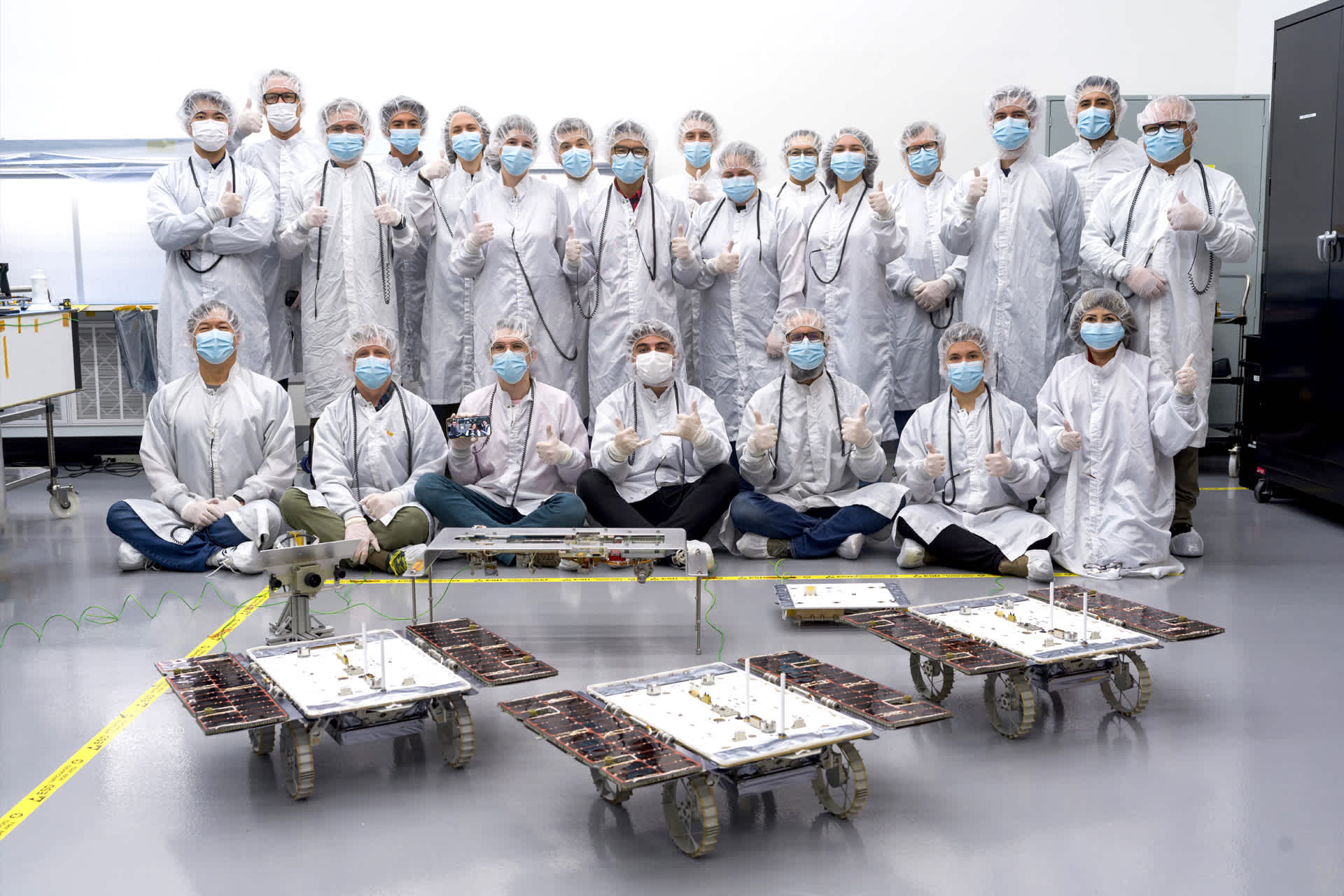Space Robotics Teams

The Jet Propulsion Laboratory (JPL), in Pasadena, California is a federally funded NASA research and development center. Spacecraft developed or managed by JPL have journeyed to every planet in our solar system.
One of JPL’s current projects is developing three rovers to survey the moon. Using Cooperative Autonomous Distributed Robotic Exploration (CADRE) technology, these rovers are able to explore the moon together without receiving direction from Earth. By taking simultaneous measurements at different locations using cameras and radar, the three can gather information that would be impossible for a single rover to collect.
It takes teamwork to build rovers for a project like this. Engineers Tonya Beatty, Molly Shelton, and Jean-Pierre de la Croix are three of the people working on the CADRE project. Beatty, a mechanical engineer, helps build the base and the parts that enable a rover to move. She attaches the wheels, which have sharp points to dig into the moon’s surface so the rover doesn’t slip. Shelton, a power systems engineer, installs the solar panels that power the rovers. The rovers have computer technology that helps them find sunny spots where they can recharge. Jean-Pierre, a robotics systems engineer, writes the computer code that tells the rovers what to do. “It’s never 100% right the first time,” he says, so it takes a lot of work to perfect the coding.
It takes nearly eight years to finish the project, including creating the parts for the CADRE rovers, assembly, testing, and coding. The engineers work in clean rooms and wear special suits to prevent contamination. “We want to bring stuff back from the moon, not bring germs to it,” Beatty explains. Precise measurements and repeated testing on Earth ensure the rovers function flawlessly.
The CADRE rovers are scheduled to be sent to the moon in 2026. This technology represents a big step forward in space robotics. It will help us learn more about the moon and prepare for missions to more-distant places. The CADRE project shows how well rovers can work as a team, just like the engineers at JPL. JPL’s motto is “Dare mighty things.” Working together, they turn mighty dreams into reality, and push the limits of space exploration.

